-

新人教版高中英语选修2Unit 5 Reading for writing教学设计
你校英语报计划出版一期急救常识专刊,现面向全校学生公开征集稿件,你有意参加。请你根据下面提示内容,用英语写一篇短文,介绍在车祸现场对伤者进行急救的方法和步骤。1.确保现场的安全;2.询问伤者,确保其呼吸正常;3.检查伤口,如流血则应采取止血措施;4.如需急救,确保其处于康复位置。注意:1.词数80左右;2.可以适当增加细节,以使行文连贯。参考词汇:康复位置 recovery positionAs we all know, having a knowledge of first aid can make a great difference in our daily life. If a traffic accident happens and someone is injured, the following steps can be used to treat the injured.In the first place, we should make sure that the accident scene is safe so that we won’t get hurt. We should ask the injured person if he is OK, and see if he is breathing. What’s more, we should check for cuts and wounds. If he is bleeding badly, it is vital that we should try to stop the bleeding by applying pressure to the injury. This is because if a person loses too much blood, he may die. If necessary, take the injured person to the hospital as soon as possible.Do remember: when giving first aid, please be sure to place the person in a recovery position.

新人教版高中英语选修2Unit 3 Reading for writing教学设计
The theme of this part is to write an article about healthy diet. Through reading and writing activities, students can accumulate knowledge about healthy diet, deepen their understanding of the theme of healthy diet, and reflect on their own eating habits. This text describes the basic principles of healthy diet. The author uses data analysis, definition, comparison, examples and other methods. It also provides a demonstration of the use of conjunctions, which provides important information reference for students to complete the next collaborative task, writing skills, vivid language materials and expressions.1. Teach Ss to learn and skillfully use the new words learned from the text.2. Develop students’ ability to understand, extract and summarize information.3. Guide students to understand the theme of healthy diet and reflect on their own eating habits.4. To guide students to analyze and understand the reading discourse from the aspects of theme content, writing structure, language expression, etc., 5. Enable Ss to write in combination with relevant topics and opinions, and to talk about their eating habits.1. Guide students to analyze and understand the reading discourse from the aspects of theme content, writing structure, language expression, etc.2. Enable them to write in combination with relevant topics and opinions, and to talk about their eating habits.3. Guide the students to use the cohesive words correctly, strengthen the textual cohesion, and make the expression fluent and the thinking clear.Step1: Warming upbrainstorm some healthy eating habits.1.Eat slowly.2.Don’t eat too much fat or sugar.3.Eat healthy food.4.Have a balanced diet.Step2: Read the passage and then sum up the main idea of each paragraph.

新人教版高中英语选修2Unit 2 Using langauge-Listening教学设计
? B: Absolutely! Getting involved with Chinese cultural activities there definitely helped a lot. I got to practice my Chinese on a daily basis, and I could learn how native Chinese speakers spoke.? A: What do you feel is your biggest achievement?? B: Learning Chinese characters! I have learnt about 1,500 so far. When I first started, I didn't think it was even going to be possible to learn so many, but now I find that I can read signs, menus, and even some easy newspaper articles.? A: What are you most keen on?? B: I've really become keen on learning more about the Chinese culture, in particular Chinese calligraphy. As I have learnt Chinese characters, I have developed a great appreciation for their meaning. I want to explore Chinese characters by learning how to write them in a more beautiful way. ? A: Finally, what do you want to say to anyone interested in learning Chinese?? I have really become keen on learning more about the Chinese culture, in particular Chinese Calligraphy. As I have learnt Chinese character, I have developed a great appreciation for their meaning. I want to explore Chinese characters by learning how to write them in a more beautiful way.? A: Finally, what do you want to say to anyone interested in learning Chinese?? B: I'd say, give it a shot! While some aspects may be difficult, it is quite rewarding and you will be happy that you tried.? A: Thanks for your time. ? B:You're welcome.

新人教版高中英语选修2Unit 4 Learning about Language教学设计
This section guides students to pay attention to the typical context of vocabulary use, helps students accumulate vocabulary around the key vocabulary of this unit, and uses the learned words and word chunks in different contexts to deeply understand their meaning and usage, so as to achieve the purpose of review and consolidation.The teaching design activities aim to guide students to pay attention to the typical context in which the target vocabulary is used, as well as the common vocabulary used in collocation, so that students can complete the sentence with correct words. In terms of vocabulary learning strategies, this unit focuses on cultivating students' ability to pay attention to collocation of words and to use word blocks to express meaning.For vocabulary learning, it is not enough just to know the meaning of a single word, but the most important thing is to master the common collocations of words, namely word blocks.Teachers should timely guide students to summarize common vocabulary collocation, such as verb and noun collocation, verb and preposition collocation, preposition and noun collocation, and so on.1. Guide students to understand and consolidate the meaning and usage of the vocabulary in the context, 2. Guide the students to use the unit topic vocabulary in a richer context3. Let the students sort out and accumulate the accumulated vocabulary, establishes the semantic connection between the vocabulary,4. Enable students to understand and master the vocabulary more effectivelyGuiding the Ss to use unit topic words and the sentence patterns in a richer context.

新人教版高中英语选修2Unit 5 Using langauge-Listening教学设计
The theme of this section is to learn how to make emergency calls. Students should learn how to make emergency calls not only in China, but also in foreign countries in English, so that they can be prepared for future situations outside the home.The emergency telephone number is a vital hotline, which should be the most clear, rapid and effective communication with the acute operator.This section helps students to understand the emergency calls in some countries and the precautions for making emergency calls. Through the study of this section, students can accumulate common expressions and sentence patterns in this context. 1.Help students accumulate emergency telephone numbers in different countries and learn more about first aid2.Guide the students to understand the contents and instructions of the telephone, grasp the characteristics of the emergency telephone and the requirements of the emergency telephone.3.Guide students to understand the first aid instructions of the operators.4.Enable Ss to make simulated emergency calls with their partners in the language they have learned1. Instruct students to grasp the key information and important details of the dialogue.2. Instruct students to conduct a similar talk on the relevant topic.Step1:Look and discuss:Match the pictures below to the medical emergencies, and then discuss the questions in groups.
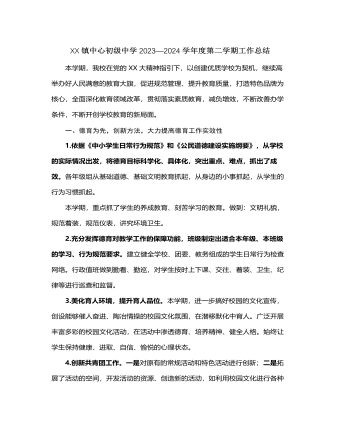
XX镇中心初级中学2023—2024学年度第二学期工作总结
五、总务后勤工作方面在本学期的教育教学工作中,总务工作在工作中坚持发挥后盾保障作用,本着以教书育人,服务育人,服务教学的原则,坚持履行学校的整体工作步骤,切实完成好学校的总务后勤工作。1.在后勤服务工作中,本着服务教学的意识,着力强化后勤队伍建设,努力增强服务意识。2.严格履行财务制度,规范财务行为。在经费使用方面执行预算审批制度,在购物方面实行采购审批和政府采购制度,杜绝了各种不正之风,保证了资金的效益最大化。3.学校和各班班主任签定了班班通责任书,加强了班班通设备管理。同时制定了《班级财产管理制度》,把公物管理列入班主任考核内容之一,加强了财产管理。
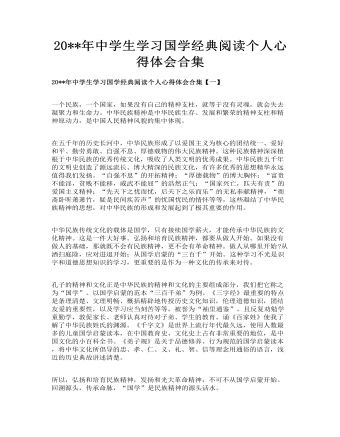
中学生学习国学经典阅读个人心得体会合集
在五千年的历史长河中,中华民族形成了以爱国主义为核心的团结统一、爱好和平、勤劳勇敢、自强不息、厚德载物的伟大民族精神。这种民族精神深深植根于中华民族的优秀传统文化,吸收了人类文明的优秀成果。中华民族五千年的文明史创造了源远流长、博大精深的民族文化,有许多优秀的思想精华永远值得我们发扬。“自强不息”的开拓精神;“厚德载物”的博大胸怀;“富贵不能淫,贫贱不能移,威武不能屈”的浩然正气;“国家兴亡,匹夫有责”的爱国主义精神;“先天下之忧而忧,后天下之乐而乐”的无私奉献精神,“衙斋卧听萧萧竹,疑是民间疾苦声”的忧国忧民的情怀等等,这些凝结了中华民族精神的思想,对中华民族的形成和发展起到了极其重要的作用。
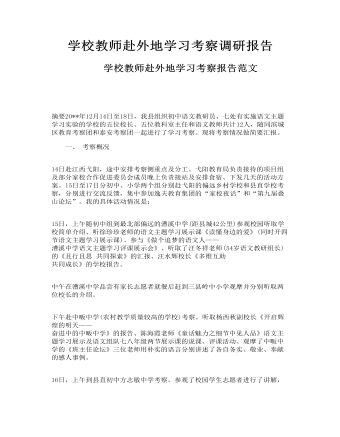
学校教师赴外地学习考察调研报告
二、 突出亮点 弋阳教育人的坦诚与热情。针对本次考察,弋阳县教体局按照项目负责的方式成立项目部,所有欲参加展示的学校,通过自主申报、项目组考察最后确定展示学校。各学校按照方华局长“把真实的我们,展示给考察的客人” 的要求,热情地为我们呈现了原生态的弋阳教育。令所有考察人员大呼“感谢!” 弋阳教育人的务实与敬业。不论是教体局领导,还是一般教师;不论是刚刚入职的“嫩芽”,还是面临退休的“老将”。对工作的务实敬业都让考察人员感到“震撼”!
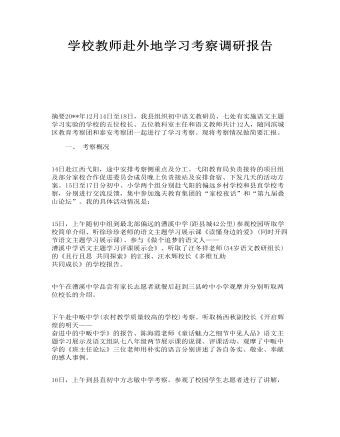
学校教师赴外地学习考察调研报告
一、 考察概况 14日赴江西弋阳,途中安排考察侧重点及分工。弋阳教育局负责接待的项目组及部分家校合作促进委员会成员晚上负责接站及安排食宿、下发几天的活动方案。15日至17日分初中、小学两个组分别赴弋阳的偏远乡村学校和县直学校考察,分别进行交流反馈,集中参加逸夫教育集团的“家校夜话”和“第九届叠山论坛”。我的具体活动情况是: 15日,上午随初中组到最北部偏远的漕溪中学(距县城42公里)参观校园听取学校简单介绍、听徐珍珍老师的语文主题学习展示课《读懂身边的爱》(同时开四节语文主题学习展示课)、参与《做个追梦的语文人——漕溪中学语文主题学习评课展示会》、听取了汪冬祥老师(54岁语文教研组长)的《且行且思 共同探索》的汇报、汪水辉校长《多维互助共同成长》的学校报告。 中午在漕溪中学品尝有家长志愿者就餐后赶到三县岭中小学观摩并分别听取两位校长的介绍。
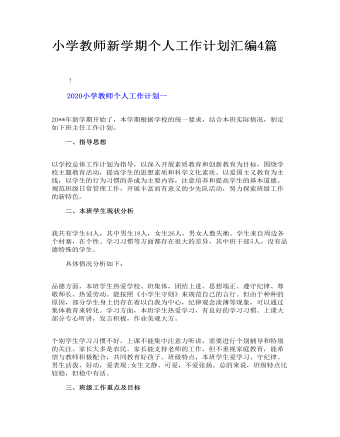
小学教师新学期个人工作计划汇编4篇
一、指导思想 以学校总体工作计划为指导,以深入开展素质教育和创新教育为目标,围绕学校主题教育活动,提高学生的思想素质和科学文化素质、以爱国主义教育为主线,以学生的行为习惯的养成为主要内容,注意培养和提高学生的基本道德。规范班级日常管理工作,开展丰富而有意义的少先队活动,努力探索班级工作的新特色。
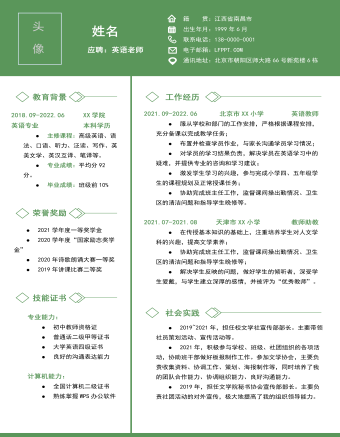
小学英语老师应聘学校教师简历
l 服从学校和部门的工作安排,严格根据课程安排,充分备课以完成教学任务;l 布置并检查学员作业,与家长沟通学员学习情况;l 对学员的学习结果负责,解决学员在英语学习中的疑难,并提供专业的咨询和学习建议;l 激发学生学习的兴趣,参与完成小学四、五年级学生的课程规划及正常授课任务;l 协助完成班主任工作,监督课间操出勤情况、卫生区的清洁问题和指导学生晚修等。l 在传授基本知识的基础上,注重培养学生对人文学科的兴趣,提高文学素养;l 协助完成班主任工作,监督课间操出勤情况、卫生区的清洁问题和指导学生晚修等;
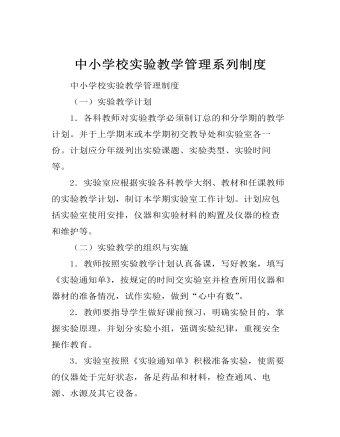
中小学校实验教学管理系列制度
1.各科教师对实验教学必须制订总的和分学期的教学计划。并于上学期末或本学期初交教导处和实验室各一份。计划应分年级列出实验课题、实验类型、实验时间等。 2.实验室应根据实验各科教学大纲、教材和任课教师的实验教学计划,制订本学期实验室工作计划。计划应包括实验室使用安排,仪器和实验材料的购置及仪器的检查和维护等。 (二)实验教学的组织与实施 1.教师按照实验教学计划认真备课,写好教案,填写《实验通知单》,按规定的时间交实验室并检查所用仪器和器材的准备情况,试作实验,做到“心中有数”。 2.教师要指导学生做好课前预习,明确实验目的,掌握实验原理,并划分实验小组,强调实验纪律,重视安全操作教育。 3.实验室按照《实验通知单》积极准备实验,使需要的仪器处于完好状态,备足药品和材料,检查通风、电源、水源及其它设备。
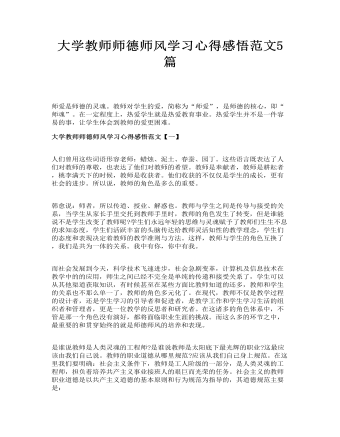
大学教师师德师风学习心得感悟范文5篇
人们曾用这些词语形容老师:蜡烛、泥土、春蚕、园丁。这些语言既表达了人们对教师的尊敬,也表达了他们对教师的希望。教师是奉献者,教师是耕耘者,桃李满天下的时候,教师是收获者。他们收获的不仅仅是学生的成长,更有社会的进步。所以说,教师的角色是多么的重要。 韩愈说:师者,所以传道、授业、解惑也。教师与学生之间是传导与接受的关系,当学生从家长手里交托到教师手里时,教师的角色发生了转变,但是谁能说不是学生改变了教师呢?学生们永远年轻的思维与灵魂赋予了教师们生生不息的求知态度,学生们活跃丰富的头脑传达给教师灵活知性的教学理念,学生们的态度和表现决定着教师的教学准则与方法。这样,教师与学生的角色互换了,我们是共为一体的关系。我中有你,你中有我。 而社会发展到今天,科学技术飞速进步,社会急剧变革,计算机及信息技术在教学中的的应用,师生之间已经不完全是单纯的传递和接受关系了,学生可以从其他渠道获取知识,有时候甚至在某些方面比教师知道的还多,教师和学生的关系也不那么单一了,教师的角色多元化了。在现代,教师不仅是教学过程的设计者,还是学生学习的引导者和促进者,是教学工作和学生学习生活的组织者和管理者,更是一位教学的反思者和研究者。在这诸多的角色体系中,不管是那一个角色没有演好,都将面临职业生涯的挑战。而这么多的环节之中,最重要的和贯穿始终的就是师德师风的培养和表现。

人教A版高中数学必修二简单随机抽样教学设计
知识探究(一):普查与抽查像人口普查这样,对每一个调查调查对象都进行调查的方法,称为全面调查(又称普查)。 在一个调查中,我们把调查对象的全体称为总体,组成总体的每一个调查对象称为个体。为了强调调查目的,也可以把调查对象的某些指标的全体作为总体,每一个调查对象的相应指标作为个体。问题二:除了普查,还有其他的调查方法吗?由于人口普查需要花费巨大的财力、物力,因而不宜经常进行。为了及时掌握全国人口变动状况,我国每年还会进行一次人口变动情况的调查,根据抽取的居民情况来推断总体的人口变动情况。像这样,根据一定目的,从总体中抽取一部分个体进行调查,并以此为依据对总体的情况作出估计和判断的方法,称为抽样调查(或称抽查)。我们把从总体中抽取的那部分个体称为样本,样本中包含的个体数称为样本量。
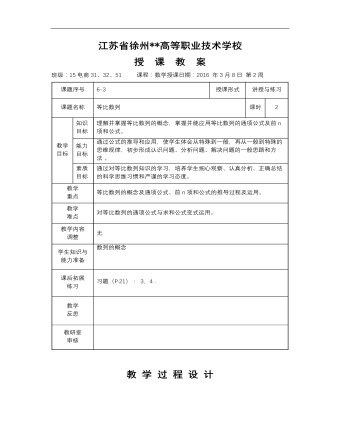
高教版中职数学基础模块下册:6.3《等比数列》教学设计
课题序号6-3授课形式讲授与练习课题名称等比数列课时2教学 目标知识 目标理解并掌握等比数列的概念,掌握并能应用等比数列的通项公式及前n项和公式。能力 目标通过公式的推导和应用,使学生体会从特殊到一般,再从一般到特殊的思维规律,初步形成认识问题、分析问题、解决问题的一般思路和方法 。素质 目标通过对等比数列知识的学习,培养学生细心观察、认真分析、正确总结的科学思维习惯和严谨的学习态度。教学 重点等比数列的概念及通项公式、前n项和公式的推导过程及运用。教学 难点对等比数列的通项公式与求和公式变式运用。教学内容 调整无学生知识与 能力准备数列的概念课后拓展 练习 习题(P.21): 3,4.教学 反思 教研室 审核
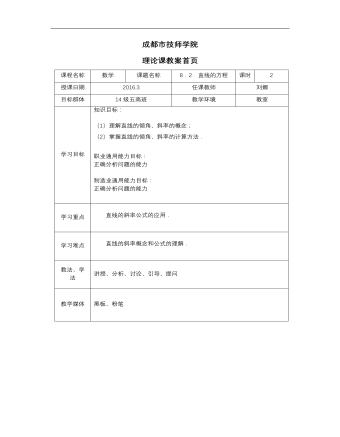
高教版中职数学基础模块下册:8.2《直线的方程》教学设计
课程名称数学课题名称8.2 直线的方程课时2授课日期2016.3任课教师刘娜目标群体14级五高班教学环境教室学习目标知识目标: (1)理解直线的倾角、斜率的概念; (2)掌握直线的倾角、斜率的计算方法. 职业通用能力目标: 正确分析问题的能力 制造业通用能力目标: 正确分析问题的能力学习重点直线的斜率公式的应用.学习难点直线的斜率概念和公式的理解.教法、学法讲授、分析、讨论、引导、提问教学媒体黑板、粉笔
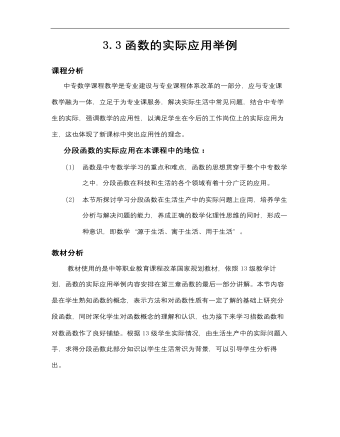
【高教版】中职数学基础模块上册:3.3《函数的实际应用举例》教学设计
课程分析中专数学课程教学是专业建设与专业课程体系改革的一部分,应与专业课教学融为一体,立足于为专业课服务,解决实际生活中常见问题,结合中专学生的实际,强调数学的应用性,以满足学生在今后的工作岗位上的实际应用为主,这也体现了新课标中突出应用性的理念。分段函数的实际应用在本课程中的地位:(1) 函数是中专数学学习的重点和难点,函数的思想贯穿于整个中专数学之中,分段函数在科技和生活的各个领域有着十分广泛的应用。(2) 本节所探讨学习分段函数在生活生产中的实际问题上应用,培养学生分析与解决问题的能力,养成正确的数学化理性思维的同时,形成一种意识,即数学“源于生活、寓于生活、用于生活”。教材分析 教材使用的是中等职业教育课程改革国家规划教材,依照13级教学计划,函数的实际应用举例内容安排在第三章函数的最后一部分讲解。本节内容是在学生熟知函数的概念,表示方法和对函数性质有一定了解的基础上研究分段函数,同时深化学生对函数概念的理解和认识,也为接下来学习指数函数和对数函数作了良好铺垫。根据13级学生实际情况,由生活生产中的实际问题入手,求得分段函数此部分知识以学生生活常识为背景,可以引导学生分析得出。
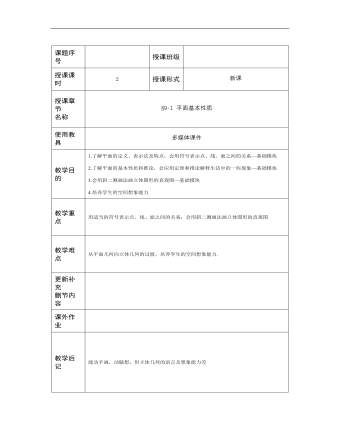
高教版中职数学基础模块下册:9.1《平面的基本性质》教学设计
课题序号 授课班级 授课课时2授课形式新课授课章节 名称§9-1 平面基本性质使用教具多媒体课件教学目的1.了解平面的定义、表示法及特点,会用符号表示点、线、面之间的关系—基础模块 2.了解平面的基本性质和推论,会应用定理和推论解释生活中的一些现象—基础模块 3.会用斜二测画法画立体图形的直观图—基础模块 4.培养学生的空间想象能力教学重点用适当的符号表示点、线、面之间的关系;会用斜二测画法画立体图形的直观图教学难点从平面几何向立体几何的过渡,培养学生的空间想象能力.更新补充 删节内容 课外作业 教学后记能动手画,动脑想,但立体几何的语言及想象能力差
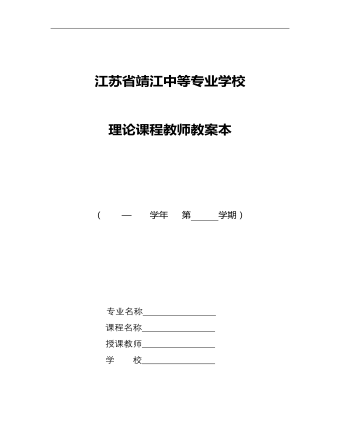
高教版中职数学基础模块下册:9.5《柱、锥、球及其简单组合体》教学设计
课题序号 授课班级 授课课时2授课形式 教学方法 授课章节 名称9.5柱、锥、球及其组合体使用教具 教学目的1、使学生认识柱、锥、球及其组合体的结构特征,并能运用这些特征描述生活中简单物体的结构。 2、让学生了解柱、锥、球的侧面积和体积的计算公式。 3、培养学生观察能力、计算能力。
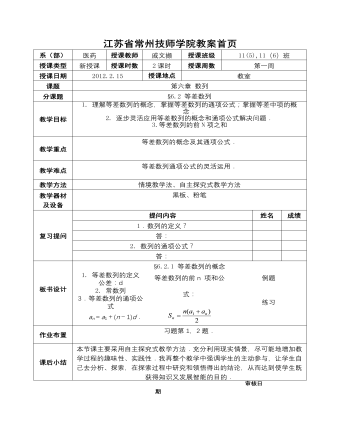
高教版中职数学基础模块下册:6.2《等差数列》教学设计
系(部)医药授课教师戚文撷授课班级11(5),11(6)班授课类型新授课授课时数2课时授课周数第一周授课日期2012.2.15授课地点 教室课题第六章数列分课题§6.2 等差数列教学目标1. 理解等差数列的概念,掌握等差数列的通项公式;掌握等差中项的概念. 2. 逐步灵活应用等差数列的概念和通项公式解决问题. 3.等差数列的前N项之和 . 4.培养学生分析、比较、归纳的逻辑思维能力. . 2. 3.教学重点等差数列的概念及其通项公式. 教学难点等差数列通项公式的灵活运用. 教学方法情境教学法、自主探究式教学方法教学器材及设备黑板、粉笔复习提问提问内容姓名成绩1.数列的定义? 答: 2. 数列的通项公式? 答: 板书设计 §6.2.1等差数列的概念 1. 1.等差数列的定义 公差:d 2.常数列 3.等差数列的通项公式 an=a1+(n-1)d. 等差数列的前n 项和公式: 例题 练习作业布置习题第1,2题.课后小结本节课主要采用自主探究式教学方法.充分利用现实情景,尽可能地增加教学过程的趣味性、实践性.我再整个教学中强调学生的主动参与,让学生自己去分析、探索,在探索过程中研究和领悟得出的结论,从而达到使学生既获得知识又发展智能的目的.


